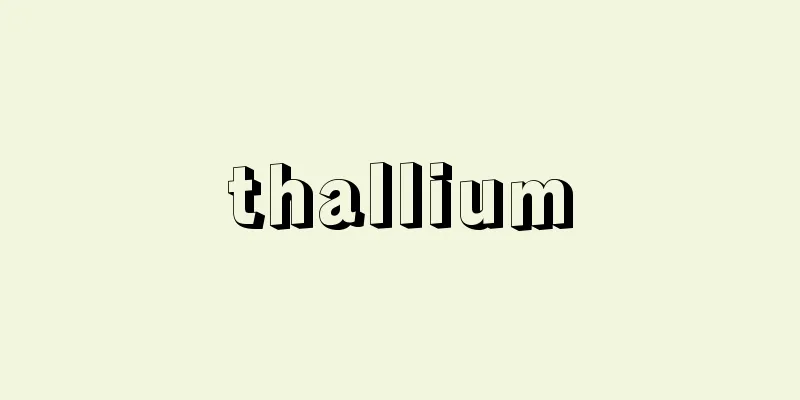thallium

|
Tl. Atomic number 81. Electron configuration [Xe]4f 14 5d 10 6s 2 6p 1. Periodic table group 13 element. Discovered by W. Crookes in 1861 in the residue of a sulfuric acid synthesis plant. Named after the beautiful green emission line in its atomic spectrum, it was named after the Greek word θαλλο (thallos), meaning "green shoot". Atomic weight 204.3833(2). Two stable isotopes with mass numbers 203 (29.524(1)%) and 205 (70.48(1)%) and radioactive isotopes with mass numbers 176-212 are known. Source: Morikita Publishing "Chemical Dictionary (2nd Edition)" Information about the Chemical Dictionary 2nd Edition |
|
Tl.原子番号81の元素.電子配置[Xe]4f 145d106s26p1の周期表13族元素.1861年W. Crookes(クルックス)が硫酸合成工場の残さ中に発見した.原子スペクトル中の美しい緑色の輝線にちなみ,“緑の若芽”を意味するギリシア語のθαλλο(thallos)から命名された.原子量204.3833(2).質量数203(29.524(1)%),205(70.48(1)%)の2種の安定同位体と,質量数176~212の放射性同位体が知られている. 出典 森北出版「化学辞典(第2版)」化学辞典 第2版について 情報 |
>>: Tagliavini - Tagliavini (English spelling) Ferruccio Tagliavini
Recommend
Stadler, E.
...Expressionist literature was not only colored ...
Renard, AF (English spelling)
…Therefore, deep-sea sediments have come to be cl...
Clover (English spelling) Kroeber, Alfred Louis
Born June 11, 1876 in Hoboken, New Jersey. [Died] ...
Fifth Avenue - Gobangai (English spelling) Fifth Avenue
A major street that runs north to south through t...
TUC - Teaching English:
Abbreviation for Trades Union Congress. Almost all...
Vasopressin
Also known as antidiuretic hormone (ADH), it is on...
Active Vision
...To this end, one approach is to give computers...
Chaconne (English: chaconne French)
A type of instrumental music in a rather slow 3-b...
Nguyen Tu (English spelling)
...This novel, set in a specific era and featurin...
Commendatio
…the translation of commendatio, generally referr...
short picture
...Toei succeeded in expanding the market with do...
Omomysidae - Omomysuka
…All have fewer teeth than this. The only known f...
Taxillus kaempferi (English spelling) Taxilluskaempferi
… [Mitsuru Hotta]... *Some of the terminology tha...
Auscultation
A diagnostic method that uses a stethoscope to lis...
Northern elephant seal (English name: Mirounga angustirostris; northern elephant seal)
The elephant seal is a member of the genus Phocida...









